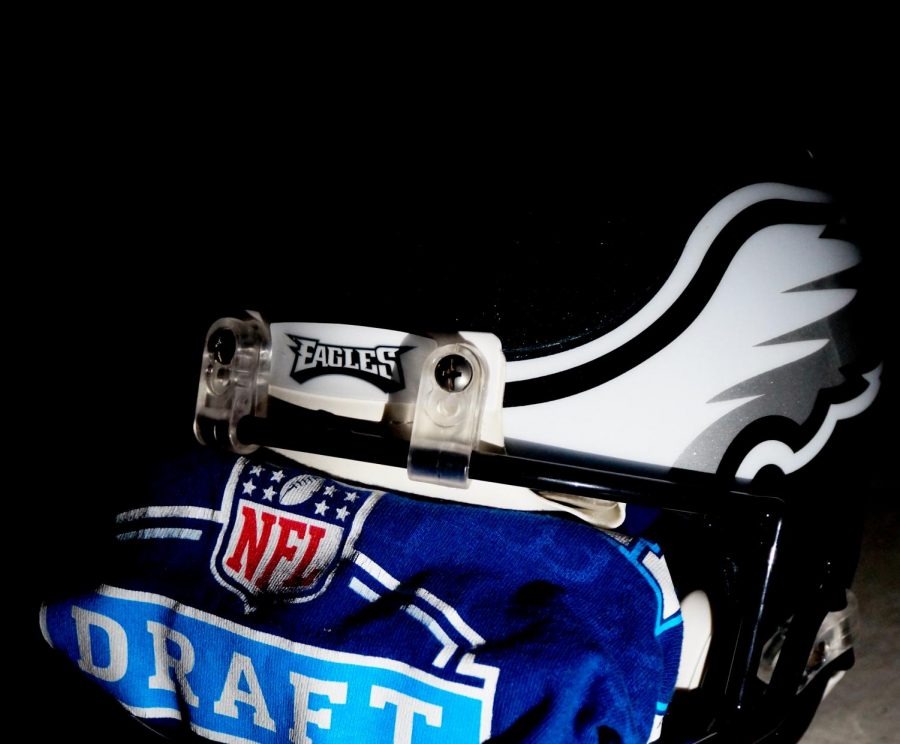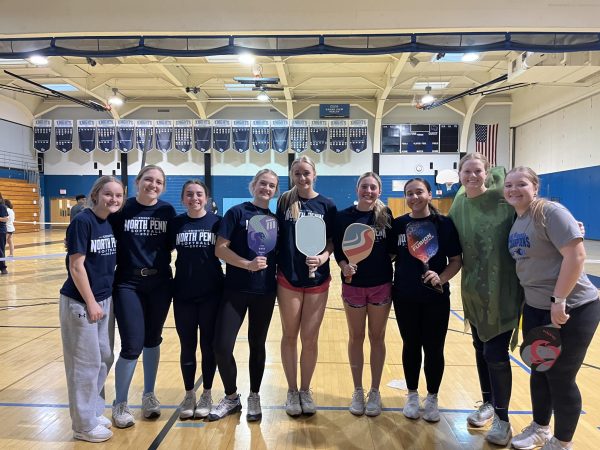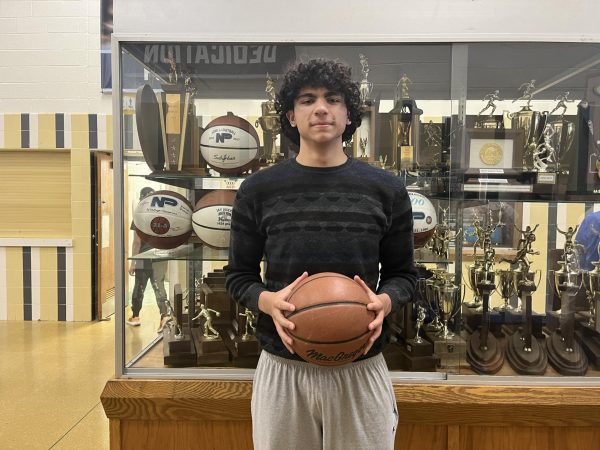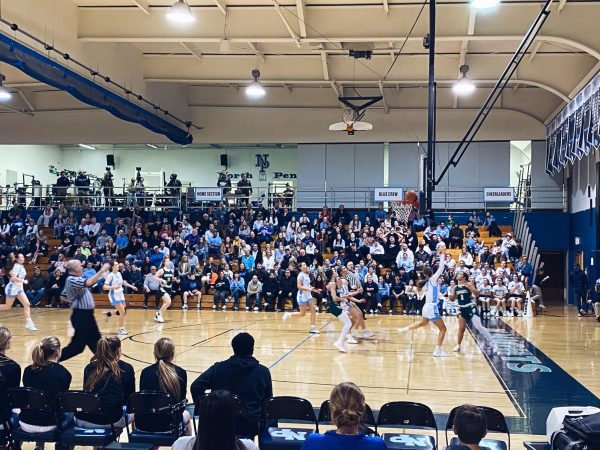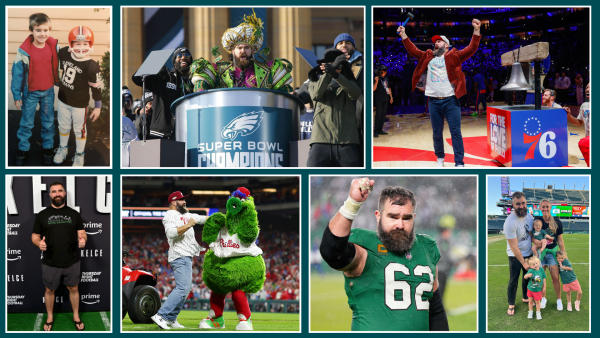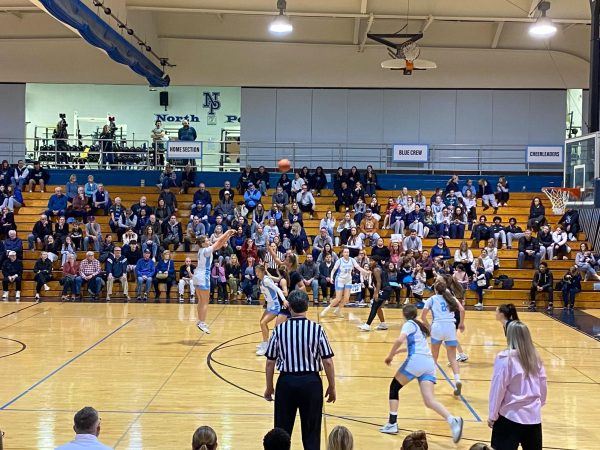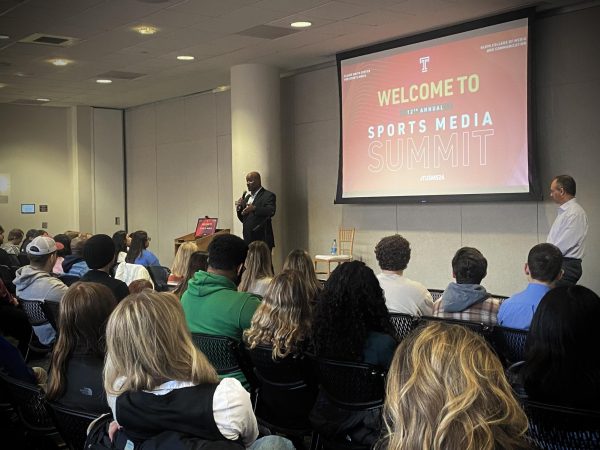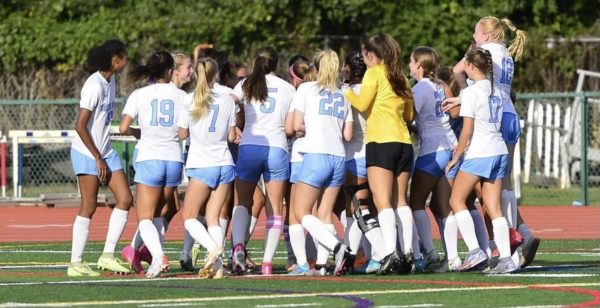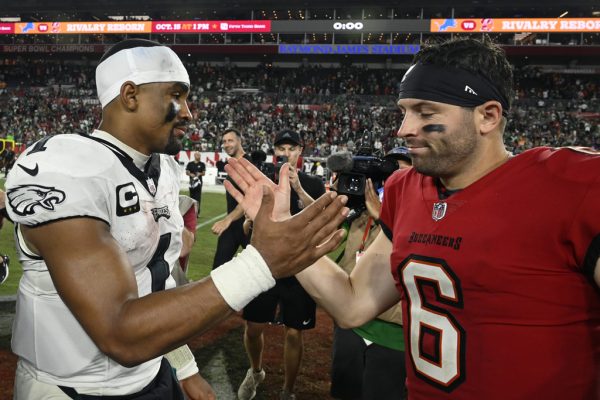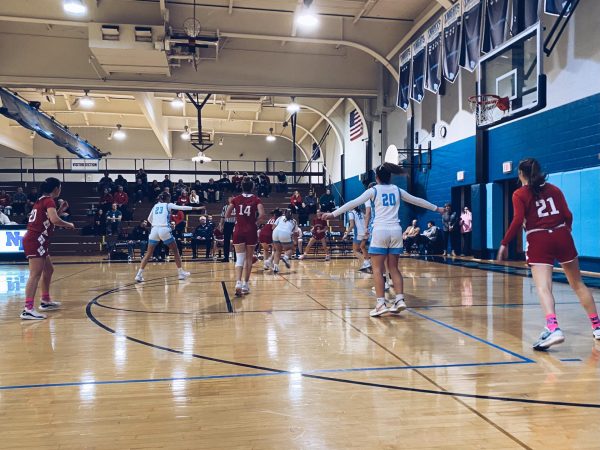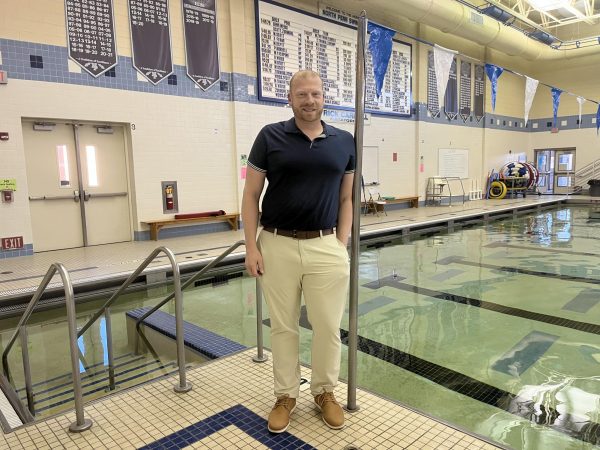Taking a look at the Eagles 2020 draft class
Staff Writer, Nick Deddy, examines the Eagles 2020 draft class.
With COVID-19 leaving sports fans with nothing to watch except reruns, many have been growing antsy for a return to live TV sports. While that might not happen for quite some time, we were graciously gifted with one last sports event, the 2020 NFL Draft. However this time, the draft was presented entirely different than ever before. Since COVID-19 makes it highly dangerous to have large gatherings in person, NFL commissioner, Roger Goodell, decided to have this year’s draft be done virtually.
Some fans and NFL team members expressed reasonable concern towards this idea, fearing catastrophic technical problems, or the possibility of hackers. However, with the only feasible alternative being to postpone the draft entirely until further notice, Goodell’s virtual draft was officially decided on as the plan of action.
Seeing the draft done this way was strange at first, but eventually I got used to it. I eventually realized that the only major differences to me, the viewer, was that there was no large audience and the players didn’t actually walk out onto a stage to greet the commissioner. Sure, the analysts and anchors were in their own homes as opposed to in Las Vegas, but that hardly made much of a difference to me. I was impressed at the amount of technical difficulties being drastically lower than I had anticipated. While I wasn’t expecting something to happen every fifteen minutes, I definitely expected to see more than there were.
Moving on from the technical side of the draft, let’s go over how our Philadelphia Eagles performed this year. In the first round, The Eagles held the 21st overall pick, and many mock drafts had them drafting a wide receiver. From the mocks I saw, Justin Jefferson from LSU seemed to be the most common pick, and after watching some of his tape, he quickly became one of my most wanted players in the first round. Surely enough, when it came time for the Eagles to make their pick, Jefferson was still available. “This is it,” I thought. “We’re actually going to draft Jefferson!” Well… no, that didn’t actually happen.
Instead of drafting Justin Jefferson, the Eagles chose to draft wide receiver Jalen Reagor from TCU. Initially, I did not like this pick. I had heard of Reagor and seen a couple clips of him, but to my knowledge at the time he was projected to be a second round pick. After taking some time to watch some of Reagor’s film, two things became clear to me. First, the Eagles clearly valued Reagor’s blazing speed over Jefferson’s height. Second, Reagor’s ability to return kicks likely also intrigued the Eagles, since Miles Sanders probably shouldn’t be doing that as much now that he’s the Eagles starting running back. Additionally, I saw some clips of Reagor taking handoffs in jet sweep plays, which the Eagles ran occasionally with former wide receiver Nelson Agholor. In the end, I can say that the Reagor pick has grown on me, but I will be watching both him and Justin Jefferson closely during the coming season to determine whether or not it was the right call.
As much as I didn’t initially agree with the Eagles’ first pick, I had hoped that their next selection would be better. Unfortunately, I was once again wrong. With the 53rd pick, the Eagles drafted Jalen Hurts, a quarterback from the University of Oklahoma. This pick baffled me, to say the least. Why were the Eagles drafting a QUARTERBACK in the second round when they have a 27 year old pro bowl-caliber starting quarterback in Carson Wentz? Not to mention, Wentz just got signed to a massive contract not too long ago, so why did the Eagles invest so much into a new quarterback? Even now, I’m not entirely sure why this happened.
I’ve heard talks about the Eagles possibly looking to run plays similar to what the New Orleans Saints do with Drew Brees and Taysom Hill, so this could possibly be their plan. However, that still doesn’t explain why the Eagles used such a high draft pick to accomplish this when they still had other areas of need that desperately needed to be addressed. For reference, Taysom Hill was undrafted, not a second round pick. Does Howie Roseman not believe that Wentz can stay healthy anymore? Does he fear Wentz retiring early in similar fashion to Andrew Luck, another quarterback who was often injured? Unfortunately, the Jalen Hurts selection raises far too many questions and answers almost none of them. All we can do is wait and see what the future holds for both Hurts and Wentz.
After the first two rounds, the Eagles draft picks became far less controversial. Even with the Jalen Reagor pick, wide receiver was still an area of need for the Eagles. Howie Roseman made addressing this problem one of his top priorities on day three, as he drafted Boise State receiver John Hightower in the fifth round, as well as Quez Watkins from the University of Southern Mississippi. On top of that, Roseman completed a trade with the San Francisco 49ers in which they acquired wide receiver Marquise Goodwin. While Goodwin hasn’t performed well in recent years, and has dealt with his fair share of injuries, his speed will still be a welcome addition to the Eagles offense.
Along with the wide receiver position, the other major area of need for the Eagles going into this draft was at the linebacker position. While Eagles fans may have had their doubts after two questionable picks, Roseman quelled those fears by first drafting Davion Taylor from the University of Colorado in the third round. Taylor posted a 4.49 40 yard dash time at the combine, which is considerably faster for his position. Hopefully Taylor’s speed can have a positive impact on the Eagles linebacker group, as it is in desperate need of improvement. Along with Davion Taylor, the Eagles selected linebackers Shaun Bradley from Temple University in the sixth round and edge rusher, Casey Toohill, from Stanford in the seventh round.
One of the biggest departures during the offseason for the Eagles was veteran safety Malcolm Jenkins. While the safety position wasn’t as big of a need for the Eagles as some other positions, a replacement for Jenkins was certainly something fans wanted to see. In case you haven’t noticed the trend yet, the Eagles delivered once again, this time by drafting K’Von Wallace from Clemson University in the fourth round. While replacing such a dominant player like Jenkins is nearly impossible, the hope is that Wallace can at least perform well in his stead.
The final area that the Eagles focused on in this year’s draft was the offensive line. It’s no secret that age is gradually becoming a problem for the Eagles offensive line, as seen in the departure of long-time offensive tackle Jason Peters. In last year’s draft, the Eagles traded up to draft Andre Dillard, an offensive tackle from Washington State University, hoping that he could potentially be Peters’s successor. This year, two offensive tackles from Auburn were taken by the Eagles; Jack Driscoll from in the fourth round and Prince Tega Wanogho in the sixth round. Although Dillard is still the most likely player to fill the void left behind by Jason Peters, these two picks should provide some much needed depth for the offensive line, at the very least.
In the end, Howie Roseman and the rest of the Eagles draft team put together a solid draft, especially after the controversial start in the first two rounds. They addressed essentially every major problem and added depth where it was needed. Not to mention, Roseman had a masterful third draft day. To give you an idea, he turned picks 146 and 190 into picks 196, 200, 210, 233, a 2021 fifth round pick, and Marquise Goodwin. Sure, we have no way of knowing right now if any of the drafted players will make a difference, but at the very least we can take solace in the fact that the Eagles made a clear effort to solve their remaining problems in this year’s draft. If I were to give the Eagles draft performance a letter grade, I would probably give them a solid B, though their grade would absolutely be higher if not for some questionable picks.
And with that, the 2020 NFL Draft comes to a close. With this comes the end of the last live televised sporting event for the foreseeable future. Sports fans clearly wanted to make the most of their last chance to enjoy live sports, as round one of the draft had a peak viewership of 19.6 million viewers, shattering the previous record. The NFL also held the NFL Draft-a-Thon, which has raised a grand total of $6,678,969.46 at the time this article is being written, and every cent of it is being put towards COVID-19 relief. This is a tremendous demonstration of how sports can unite us as a country to fight for one great cause, and it makes the decision to have the draft on schedule so much more significant than we initially thought. Overall, this was definitely a unique draft that I will never forget, but hopefully next year we can go back to the normal, in-person draft that we’re used to.


